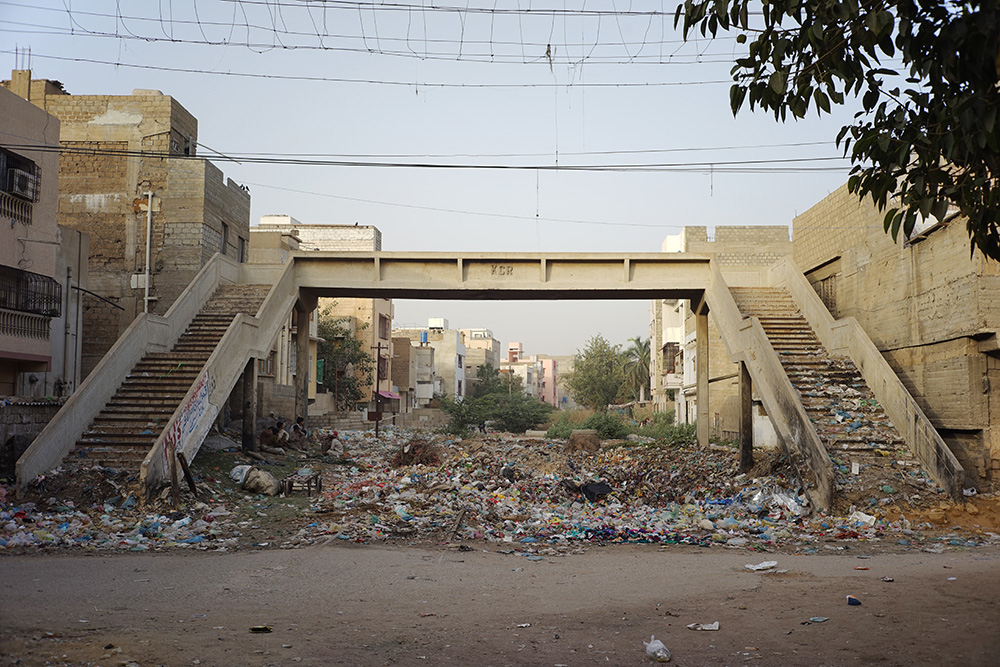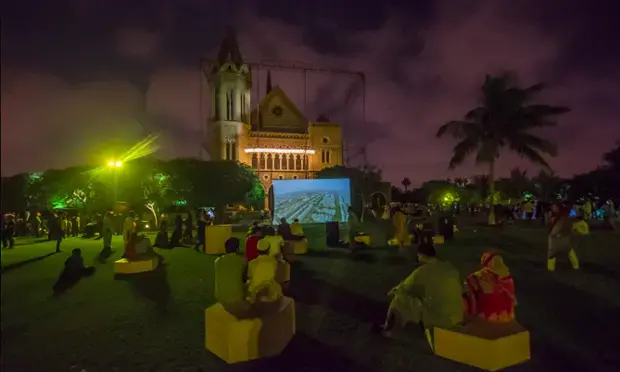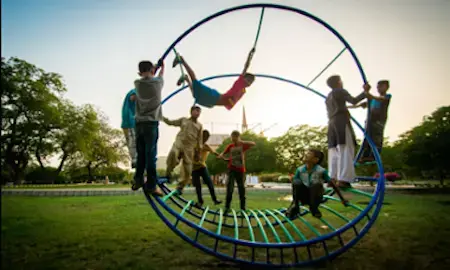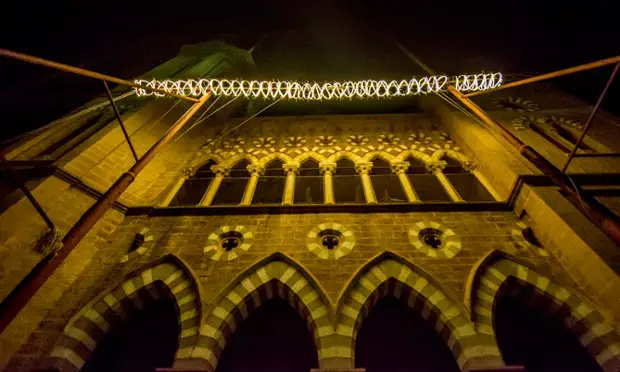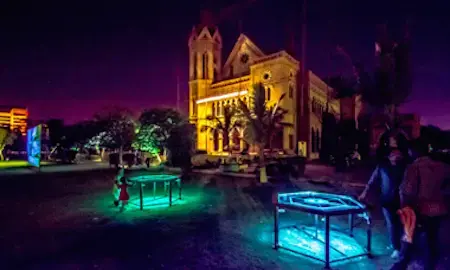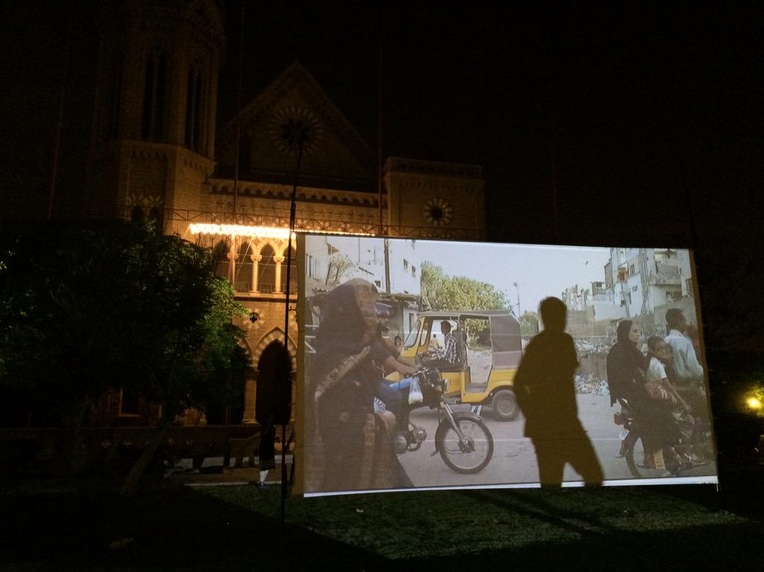Karachi, a city known for intractable political conflict and as a shelter for militants from the Afghan wars, has difficulty escaping its reputation as the world's most violent megacity. It has suffered some 13,500 killings in the past five years – a level of violence that has significantly degraded public safety and access to public spaces, and has instead encouraged the creation of sectarian, ethnic and political enclaves.
But as a city of 20 million, Karachi also has a diversity, vitality and complexity that is infrequently explored in mass-media accounts of its character. It is Pakistan's urban dynamo: a hub of business, shipping and manufacturing as well as culture and education.
In April this year, a group of Karachi residents decided to show fellow residents that they could express a positive and playful vision of their city. "Numaish" (Urdu for exhibition) was an open-air event of creative installations intended to open minds to another way of seeing the city.
Their collective "urban interventions in public space" occupied the public gardens around Frere Hall, a 19th-century city hall built by the British and preserved as part of Karachi's colonial history in downtown Saddar, heart of the old city. The exhibit then travelled to three other public spaces across the city throughout the month of May. Its curator, Saima Zaidi, described the installation as "a large-scale research project on what matters to us", which would "invite people into public spaces".
If civic life can be imagined as many small gestures leading to the creation of a society, then Numaish was a step towards a more inclusive and open city. "Over the years I've felt Karachi has closed in on itself," said Mahim Maher, one of the event's organisers. "Security furniture and blockades have narrowed streets; parks have disappeared under flats, slums and official buildings. This is why it was important for me to get involved in Numaish Karachi.
"I have no illusions about the permanency of this project. But, somewhere along the line, I am hoping it helped some parents or children or grandparents realise that the quality of their life improves if they invest in their neighbourhood public spaces."
Numaish contained work that referenced the city's recent struggles with security and violence. One of the consequences of the political battles of the past 25 years has been a collective furtiveness in the use of Karachi's public space: parks, malls and even transport are all mostly private and enclosed now. Numaish, at its core, intended to reclaim that right to free movement in public spaces.
Some of the displayed work explicitly addressed this dilemma. Yasir Husain's Overview Effect Karachi was barbed wire, wrapped in LED lights and hung upon the facade of Frere Hall – a gesture to the private enclosure of the city's properties with razor wire. (The title refers to a sensation reported by astronauts when looking at earth from space.) Seema Nusrat's Sandbag Labyrinth employed the materials of security barriers to create a maze, referencing the claustrophobia of real barricades while creating a space for exploration and mystery.
Other projects investigated Karachi's struggle against the degradation of nature. "Current" Solution, by a team of scientists and engineers, was a power-generating windmill manufactured from mass-produced parts that pointed to alternative, environmentally friendly power sources.
My own contribution to Numaish was a video installation that traced the path of the defunct Karachi Circular Railway, exploring its urban and human landscape through video, stills, text and drone footage. The film reminded viewers of an earlier vision for Karachi, one based on ease of movement through the city, while also offering a view of how it might be developed in the future.
Numaish was a small but important step in Karachi's civic life, coming at a time of continuing violence – including against free-speech advocates such as Sabeen Mahmud, the outspoken owner of a Karachi cultural centre who was shot and killed on 24 April.
Public installations, however, remain rare in the city: Zaidi says the last large-scale arts installation in the city was in 1997. Numaish was supported in part by the Karachi Metropolitan Corporation, lending hope that the city's government might support other arts and civic engagement projects in future – even in the face of hostility to civic art from other sections of Pakistani society.


